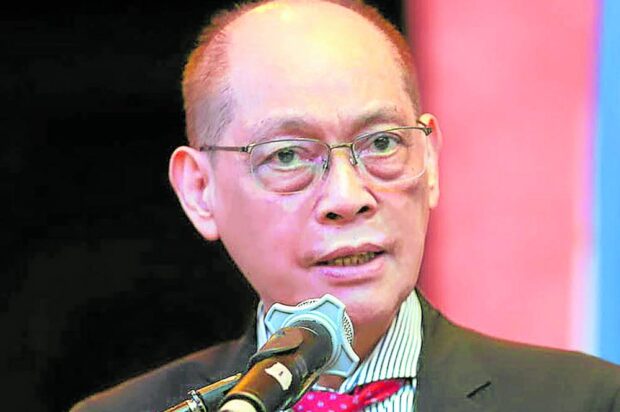MUP pension: DOF sets contributions at 5% to 9%

Finance Secretary Benjamin Diokno (Photo from the Facebook page of the Department of Finance)
MANILA, Philippines — The Marcos administration’s economic team has proposed that military and uniformed personnel (MUP) in active service contribute 5 percent of their monthly pay to their retirement fund for the first three years of a plan to reform their pension system.
The new entrants to the uniformed services would be contributing 9 percent of their basic salary and longevity pay, according to a statement on Saturday by a technical working group (TWG) led by the Department of Finance (DOF) which was created to help craft a pension reform law for MUP.
The TWG said the government would supplement the MUP contributions so that the monthly premium would total 21 percent—16 percent to those in the active service and 12 percent to the new entrants. The total monthly premium is the same for other state employees.
Diokno warning
This sharing scheme for those in the active serviced will be adjusted until a ratio of 9-percent:12-percent is reached on the seventh year of implementation of a plan aimed at forestalling the depletion of the existing MUP pension fund.
State pension fund manager Government Service Insurance System (GSIS) will then invest the fund built from the monthly premiums to grow the MUP pension kitty and achieve a return of 85 percent to 90 percent upon the retirement of uniformed service members.
Finance Secretary Benjamin Diokno earlier warned of an imminent “fiscal collapse” stemming from the ballooning pension payments, with total yearly payouts to MUP expected to breach the P1-trillion mark by 2035 from P213 billion this year.
Those covered by the current MUP pension system are members of the Armed Forces of the Philippines, Philippine National Police, Bureau of Jail Management and Penology (BJMP), Bureau of Fire Protection (BFP), Philippine Public Safety College (PPSC), Philippine Coast Guard (PCG), Bureau of Corrections (BuCor) and National Mapping and Resource Information Authority (Namria).
Unlike other state employees, they are not contributing any amount from their salaries to their retirement fund which is allocated yearly from the national budget. Diokno said that is one of the faults of the current MUP pension system.
The TWG, which has been conducting rounds of consultations among MUP groups, said the computations on the proposed contributions are based on data from an updated actuarial study by the GSIS, which will be released soon.
Roadshow
The latest leg of the TWG’s roadshow, held on June 13, attracted 10,000 in-person and online participants from the BJMP.
Consultations over the previous several weeks involved the AFP and the PNP. The TWG also held separate sessions with the Philippine Air Force and the Presidential Security Group.
The TWG has lined up consultations with the AFP’s Health Service Command, Philippine Navy, Philippine Army, Visayas Command, Eastern Mindanao Command, Western Mindanao Command, Western Command, Philippine Military Academy, Northern Luzon Command, and Southern Luzon Command.
These would be followed by meetings with BFP, PCG, BuCor, PPSC, and Namria personnel.
Diokno said that based on data as of 2022, retired MUP were receiving an average monthly pension of P40,049.
In comparison, the average monthly retirement pay of GSIS members is P13,000 and P4,528 for those covered by the Social Security System (SSS) — the pension fund for private employees.
The entry-level monthly salary of a public school teacher, or Teacher I, is P27,000 while the entry-level monthly salary of a government nurse is P36,619.
The monthly base pay of the entry-level police patrolman or a private in the Army and those with equivalent rank in the BJMP, BFP, and PCG was raised to P29,668 by former President Rodrigo Duterte in 2018.
Other workers
Other government employees contribute 9 percent of their monthly salaries and their employers match that with 12 percent for a monthly pension fund premium of 21 percent.
SSS members contribute 4.5 percent of their monthly pay while their employers contribute 9.5 percent for their pension fund.
Members of the uniformed services retire at age 56, much younger than other government employees who may opt for early retirement at 60 but must fully retire at 65.
As a result, soldiers, police and other uniformed personnel benefit sooner and enjoy their pension fund longer than the rest of those in government service.
Also, under the so-called automatic “indexation,” they receive additional amounts whenever the monthly pay of a uniformed personnel in active service with a rank that is the same as theirs is raised.